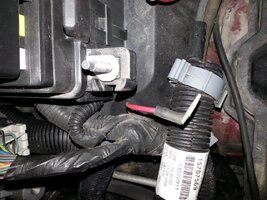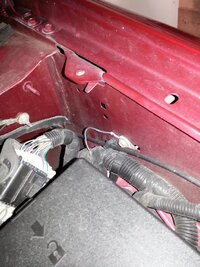- Mar 13, 2014
- 35
Hello all, I'm new to the Envoy scene and really happy with it for the most part. I'm having a rather perplexing issue and I'm not sure if it's electrical or motor.
What I have going on encompasses a number of things but it seems to all tie together. With the vehicle running if I turn on my dome light it flickers in time with a slight miss in the engine that is on the passenger side. Actually all the lights flicker in sync with the slight miss, this includes headlights, dash lights, all of the lights. My passenger rear back up light comes on very slowly and also very dim when I press the unlock button. The driver side back up light comes on instantly and bright. I also have a fuel gauge that seems to have a mind of its own and just goes all over the place, from full to empty, and then somewhere in between.
My first thought is a bad or flakey ground somewhere in the system. It just seems that to many things are tied in with the slight miss, dome light flicker, fuel gauge, and back up light. The other thing I have noticed is that the radio seems to forget things sometimes. Some days I will hop in and the time is correct. Other days it will have changed all on its own to Eastern Time, Western Time, all over the place. The radio presets stay ok but it just seems to be a little forgetful.
I'm hoping for a little help or ideas as to what could be causing the issues. I'm all ears here so fire away with your suggestions and ideas!!
Thanks,
Tony
What I have going on encompasses a number of things but it seems to all tie together. With the vehicle running if I turn on my dome light it flickers in time with a slight miss in the engine that is on the passenger side. Actually all the lights flicker in sync with the slight miss, this includes headlights, dash lights, all of the lights. My passenger rear back up light comes on very slowly and also very dim when I press the unlock button. The driver side back up light comes on instantly and bright. I also have a fuel gauge that seems to have a mind of its own and just goes all over the place, from full to empty, and then somewhere in between.
My first thought is a bad or flakey ground somewhere in the system. It just seems that to many things are tied in with the slight miss, dome light flicker, fuel gauge, and back up light. The other thing I have noticed is that the radio seems to forget things sometimes. Some days I will hop in and the time is correct. Other days it will have changed all on its own to Eastern Time, Western Time, all over the place. The radio presets stay ok but it just seems to be a little forgetful.
I'm hoping for a little help or ideas as to what could be causing the issues. I'm all ears here so fire away with your suggestions and ideas!!
Thanks,
Tony





 ). You may also have an issue with serial communications.
). You may also have an issue with serial communications.
